Balkinization
an unanticipated consequence of
Jack M. Balkin
Balkinization Symposiums: A Continuing List
E-mail:
Jack Balkin:
jackbalkin at yahoo.com
Bruce Ackerman
bruce.ackerman at yale.edu
Ian Ayres
ian.ayres at yale.edu
Corey Brettschneider
corey_brettschneider at brown.edu
Mary Dudziak
mary.l.dudziak at emory.edu
Joey Fishkin
joey.fishkin at gmail.com
Heather Gerken heather.gerken at yale.edu
Abbe Gluck abbe.gluck at yale.edu
Mark Graber
mgraber at law.umaryland.edu
Stephen Griffin
sgriffin at tulane.edu
Jonathan Hafetz
jonathan.hafetz at shu.edu
Jeremy Kessler
jkessler at law.columbia.edu
Andrew Koppelman
akoppelman at law.northwestern.edu
Marty Lederman
msl46 at law.georgetown.edu
Sanford Levinson
slevinson at law.utexas.edu
David Luban
david.luban at gmail.com
Gerard Magliocca
gmaglioc at iupui.edu
Jason Mazzone
mazzonej at illinois.edu
Linda McClain
lmcclain at bu.edu
John Mikhail
mikhail at law.georgetown.edu
Frank Pasquale
pasquale.frank at gmail.com
Nate Persily
npersily at gmail.com
Michael Stokes Paulsen
michaelstokespaulsen at gmail.com
Deborah Pearlstein
dpearlst at yu.edu
Rick Pildes
rick.pildes at nyu.edu
David Pozen
dpozen at law.columbia.edu
Richard Primus
raprimus at umich.edu
K. Sabeel Rahmansabeel.rahman at brooklaw.edu
Alice Ristroph
alice.ristroph at shu.edu
Neil Siegel
siegel at law.duke.edu
David Super
david.super at law.georgetown.edu
Brian Tamanaha
btamanaha at wulaw.wustl.edu
Nelson Tebbe
nelson.tebbe at brooklaw.edu
Mark Tushnet
mtushnet at law.harvard.edu
Adam Winkler
winkler at ucla.edu
Compendium of posts on Hobby Lobby and related cases
The Anti-Torture Memos: Balkinization Posts on Torture, Interrogation, Detention, War Powers, and OLC
The Anti-Torture Memos (arranged by topic)
Recent Posts
Threats to Workplace Speech in a Time of Free Speech Crisis
Just A Few Blogs
ACS Blog
Alas, a Blog
Althouse
Arts and Letters Daily
Atrios (Eschaton)
Bill of Health
Buzzflash.com
Buzz Machine
Cato at Liberty
Juan Cole (Informed Comment)
Concurring Opinions
The Constitution in 2020
Corrente
Crooked Timber
Daily Howler
Daily Kos
Dana Boyd
Brad DeLong
Digby (Hullabaloo)
Discriminations
Daniel Drezner
Kevin Drum (Mother Jones)
Electrolite
En Banc
Eunomia (Daniel Larison)
Fafblog
Michael Froomkin (Discourse.net)
GovLab (Beth Noveck)
Rick Hasen (Election Law)
History News Network
How Appealing
Ignatz (Sam Heldman)
The Importance of (Ernie Miller)
Infolaw
Instapundit
International Economic Law and Policy Blog
IntLawGrrls
Jacob Levy
Jesus' General
Jurisdynamics
The Kitchen Cabinet
Mark Kleiman
Law Blog Central
Larry Lessig
Lawyers, Guns and Money
Liberal Oasis
Brian Leiter's Law School Reports
The Leiter Reports
Marginal Revolution
Megan McArdle
Memeorandum
Metafilter
Mirror of Justice
The New Republic
Newseum
No More Mister Nice Blog
Brendan Nyhan
Opinio Juris
Orcinus
The Originalism Blog
Pandagon
Passport (Foreign Policy)
Overcoming Bias
Political Animal (Washington Monthly)
Political Theory Daily Review
Political Wire (Taegan Goddard)
The Poor Man
Virginia Postrel
Prawfsblawg
Public Reason
Jonathan Rauch
Raw Story
Redstate
ReligiousLeftLaw.com
Reporters Committee For Freedom of the Press
Reproductive Rights Blog
Rothman's Roadmap to the Right of Publicity
SCOTUS Blog
Seeing the Forest
Clay Shirky
The Shifted Librarian
The Situationist
Larry Solum (Legal Theory)
Andrew Sullivan
Talking Points Memo
Talk Left
Tapped
Tbogg
TechPresident
The Paper Chase (Jurist)
Tom Paine
Tom Tomorrow (This Modern World)
Eve Tushnet
Uggabugga
University of Chicago Law School Faculty Blog
Unqualified Offerings
The Volokh Conspiracy
War and Piece (Laura Rozen)
Wampum
Oliver Willis
Wonkette
Written Description
Matthew Yglesias
Yin
Your Choice of Feeds
1. XML
powered by
2. Atom Feed
3. RSS 2.0
Threats to Workplace Speech in a Time of Free Speech Crisis
Guest Blogger
For the Balkinization symposium on Free Speech in Crisis and the Limits of the First Amendment. Helen Norton Because
of work’s centrality to the lives of so many, workplaces operate as sites for
individual and collective expression and for democratic engagement.
While at work, workers and employers alike engage in, and listen to, speech on
matters of both public and private concern. And sometimes the general public is
also among the audiences for workplace speech. In
short, speech at work is often of great First Amendment value. We should thus worry
about efforts to restrict the free flow of ideas, information, and opinion in
the workplace. Yet governments—and private employers too—frequently silence and
distort on-the-job speech in a variety of ways and for a variety of reasons.
Here I sketch some contemporary threats to free speech at work. The Government’s
Threats Against Speech in Private-Sector Workplaces First
Amendment protections should be at their strongest when the government
restricts speech at nongovernmental workplaces based on that expression’s content or viewpoint. The
government restricts speech in violation of the First Amendment not only when
it engages in an exercise of hard law—for example, when it enacts
a statute prohibiting certain workplace speech based on its content or
viewpoint—but also through its speech that threatens to take adverse
action against such expression. In
earlier work, I’ve discussed why the government’s speech is generally
exempt from Free Speech Clause scrutiny: the government must speak in order to
govern. And the government’s speech—even when it makes us crazy—can offer great
value in informing the public’s decisions about whether and when to hold that
government politically accountable for its priorities. At the same time, however,
I’ve emphasized a limited but important universe of situations when the
government’s speech can, and should, be understood to violate the Constitution.
Here I focus on the Free Speech Clause, but sometimes (depending on the facts) the
government’s speech can violate the Due Process Clause, Equal Protection
Clause, Establishment Clause, or other constitutional provisions. More
specifically, the government’s speech can violate the Constitution when it changes
its targets’ expression in ways that would violate the Free Speech Clause if
the government accomplished those same changes through its hard law action. This
includes the government’s
threats of adverse action that have the intent or the effect of silencing
its targets’ speech based on content or viewpoint. Along
similar lines, Genevieve Lakier’s new article
explains how the Supreme Court’s decision last year in National Rife Association of America v.
Vullo reaffirms and clarifies a categorical rule that bars the
government from threatening harm or promising benefits based on its target’s expressive
conformity with the government’s ideological preferences. Under Vullo, the relevant inquiry is whether the
government engaged in “conduct that, viewed in context, could be reasonably
understood to convey a threat of adverse government action” and that the
government did so “in order to punish or suppress the plaintiff’s speech.” As
Lakier explains, what matters for triggering this categorical bar is the
government’s intent to coerce its targets’ expression through its speech
reasonably understood as a threat, rather than the success of the government’s
effort or the magnitude of the threatened harm or benefit. These
principles are key when thinking about the government’s threats to punish
speech in the workplace, as well as the government’s threats to deny access to public
employment based on applicants’ or employees’ speech and association. Consider
first the Trump Administration’s Jan
21, 2025 Executive Order on matters related to DEI (“Diversity Equity, and
Inclusion”). Here I focus on what some call the Order’s “enforcement provision,”
which requires the Attorney General to develop a
plan to “deter DEI programs or principles (whether specifically denominated
‘DEI’ or otherwise) that constitute illegal discrimination or preferences” and to
identify “potential civil compliance investigations of publicly traded
corporations, large non-profit corporations or associations, foundations with
assets of 500 million dollars or more, State and local bar and medical
associations, and institutions of higher education with endowments over 1
billion dollars.” The Executive Order itself offers no explanation of what the federal
government now considers to be “illegal” DEI—even though most employment
practices undertaken under this capacious term (which is not a legal term of art but instead
describes a wide range of values, perspectives, policies, and practices) are
entirely legal, like expanding the talent pools from which applicants are
recruited and ensuring that selection criteria screen for successful job performance.
Nor, in litigation challenging the Order, have the government’s lawyers
answered judges’ questions about what the government now understands as “illegal”
DEI. To be sure, some of the
Administration’s communications describing the Order’s scope focus on specific
employment actions that have long violated employment discrimination law—like making
ultimate employment decisions based on protected class status. But many other Administration
communications are not so cabined, like the White
House fact sheet on the Order that described “DEI’s foundational rhetoric
and ideas” as “foster[ing] intergroup hostility and authoritarianism.” And President Trump’s post stating “Paul Weiss
[now] affirms its commitment to merit-based hiring, promotion, and retention,
and will not adopt, use, or pursue any DEI policies.” The
considerable uncertainties created by the Administration’s failure to specify the
Order’s reach, coupled with its threat of legal action against employers who
violate the Order, chill valuable workplace speech based on content and
viewpoint. Examples include speech about how to address longstanding structural
inequalities that deny equal opportunity based on protected class status and
regardless of merit, and speech that communicates support for achieving
diversity, equity, and inclusion on the job. (Note
that protected workplace speech engaging these ideas is readily distinguishable
from the limited but important universe of cases involving targeted workplace
harassment that alters the terms and conditions of employment based on
protected class status. Courts and commentators have long
recognized that quid pro quo harassment—in which an employer threatens
on-the-job punishment or offers on-the-job reward based on a worker’s response
to unwelcome sexual advances—is unprotected by the First
Amendment. Think too of workers forced to
endure repeated racial or sexual epithets that change the terms and conditions of their employment just as effectively and miserably as
being dispatched, based on race or sex, to an unheated basement office in the
dead of winter. For similar reasons, the Court has made clear that an
employer’s statement that “only white applicants need
apply” is unprotected by the First
Amendment because it declares certain job opportunities off limits to protected
class members.) Turn
next to a different employment-related threat to free speech: threats by the interim U.S. Attorney for the District of
Columbia to deny jobs and internships to anyone “who is a student or affiliated
with a law school or university that continues to teach and utilize DEI.” Governmental threats to exclude from
public employment those exposed to certain ideas—or those who have associated
with those who teach or agree with those ideas—exploit the government’s hiring
power to enforce orthodoxies of speech outside of the public-sector workplace. As
Eugene Volokh has
explained, these threats run afoul of longstanding First Amendment
constraints against the government’s viewpoint- and content-based speech
restrictions. And here too, these First Amendment constraints apply to the government’s
threats and not just the government’s hard law action. Governmental
Employers’ Regulation of Their Workers’ Speech The
government has considerably more First Amendment latitude to control its
employees’ speech in its role as employer than it does to regulate private-sector
workplace speech in its role as sovereign. More specifically, the Court has
held that public employees’ speech pursuant to their
official duties is entirely unprotected by the First Amendment. Public
employees’ speech on matters of public concern that is not pursuant to their
official duties remains protected by the
First Amendment so long as that expression’s value outweighs the
government’s operational interests. But courts’ deference to the
government’s efforts to control public employees’ speech too often frustrates
representative government by enabling the government to deny the public of
whistleblowing and other valuable job-related
speech about governmental operations. Critics of the
Court’s public employee speech doctrine thus charge that it disregards this
expression’s First Amendment value in informing voters’
ability to hold the government politically accountable for its performance. Working
within the limits of this doctrine requires an appropriately narrow
understanding of when public employees’ job-related speech actually occurs pursuant to their official duties and thus
unprotected by the First Amendment. For example, depending on a public
employee’s job, their speech about DEI-related matters and other matters of
public concern may not be among their official job duties—in which case, that
expression remains protected by the First Amendment, with its regulation
subject to Pickering balancing. Turning
from constitutional to statutory free speech guarantees, legislatures can also safeguard
the public’s interest in this expression by enacting whistleblower and related
protections for government workers’ speech on matters of public concern. This,
of course, requires legislatures’ exercise of political will. Private-Sector Employers’
Restrictions of Workplace Speech Turn now to powerful private
parties’ threats that silence workplace speech. If the government uses threats
to coerce private-sector employers into restricting their workers’ speech in
service of the government’s preferred expressive orthodoxies, then the Vullo rule, discussed above, should
apply. But private-sector employers may seek to
control workers’ expression—without any government involvement—to enforce their
own ideological commitments, to curry favor with the government, or for other
reasons. To be sure, private-sector employers are not constrained by the First
Amendment. Yet legislatures have the constitutional power to protect workers’
speech from employers’ reprisal. Examples
include not only statutory whistleblower protections, but also the
antiretaliation protections provided by Title VII and related laws that
attend to the asymmetries of power and information in the workplace that often
work to silence employees’ speech. Along these lines, the Supreme Court has interpreted
the National
Labor Relations Act to protect workers from their employers’ threats to
punish workers’ support for unions. Note
too that workplace free speech issues can be triggered not only when employers
restrict workers’ expression based on content or viewpoint, but also when they compel
their workers to listen to certain viewpoints. Ash Bhagwat, for instance, maintains that
speakers in most cases have no First Amendment right to force their views on
unwilling listeners—and that the First Amendment thus permits the government to
intervene to protect those unwilling listeners. Along these lines, some states
have enacted laws protecting workers from captive
audience meetings where employers exercise their power to insist that their
employees listen to antiunion views, and sometimes religious and political
speech more generally. Here too, these
tools for addressing expressive
inequalities in the workplace require legislatures’
exercise of political will. Conclusion In
short, First Amendment tools are available to courts for addressing the
government’s threats intended to chill and silence expression in the workplace
and the government’s threats to deny access to the government workplace based
on expression outside of that workplace. Legislatures and enforcement agencies can
also protect workplace speech by enacting and enforcing statutory free speech guarantees.
What remains to be seen, however, is whether
and how courts and other actors will use these tools to protect the free
flow of workplace expression during times of free speech crisis. Helen Norton is University Distinguished Professor and Rothgerber Chair in Constitutional Law, University of Colorado School of Law. You can reach her by email at helen.norton@colorado.edu.
Posted
9:30 AM
by Guest Blogger [link]
Books by Balkinization Bloggers

Gerard N. Magliocca, The Actual Art of Governing: Justice Robert H. Jackson's Concurring Opinion in the Steel Seizure Case (Oxford University Press, 2025)

Linda C. McClain and Aziza Ahmed, The Routledge Companion to Gender and COVID-19 (Routledge, 2024)

David Pozen, The Constitution of the War on Drugs (Oxford University Press, 2024)

Jack M. Balkin, Memory and Authority: The Uses of History in Constitutional Interpretation (Yale University Press, 2024)
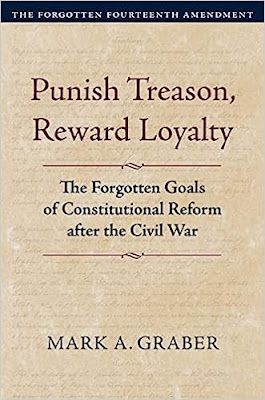
Mark A. Graber, Punish Treason, Reward Loyalty: The Forgotten Goals of Constitutional Reform after the Civil War (University of Kansas Press, 2023)
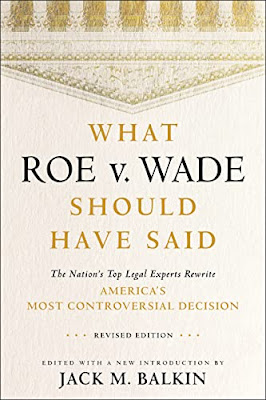
Jack M. Balkin, What Roe v. Wade Should Have Said: The Nation's Top Legal Experts Rewrite America's Most Controversial Decision - Revised Edition (NYU Press, 2023)

Andrew Koppelman, Burning Down the House: How Libertarian Philosophy Was Corrupted by Delusion and Greed (St. Martin’s Press, 2022)

Gerard N. Magliocca, Washington's Heir: The Life of Justice Bushrod Washington (Oxford University Press, 2022)
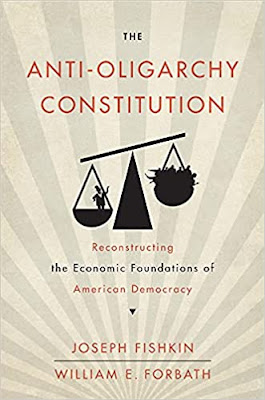
Joseph Fishkin and William E. Forbath, The Anti-Oligarchy Constitution: Reconstructing the Economic Foundations of American Democracy (Harvard University Press, 2022)

Mark Tushnet and Bojan Bugaric, Power to the People: Constitutionalism in the Age of Populism (Oxford University Press 2021).

Mark Philip Bradley and Mary L. Dudziak, eds., Making the Forever War: Marilyn B. Young on the Culture and Politics of American Militarism Culture and Politics in the Cold War and Beyond (University of Massachusetts Press, 2021).

Jack M. Balkin, What Obergefell v. Hodges Should Have Said: The Nation's Top Legal Experts Rewrite America's Same-Sex Marriage Decision (Yale University Press, 2020)

Frank Pasquale, New Laws of Robotics: Defending Human Expertise in the Age of AI (Belknap Press, 2020)

Jack M. Balkin, The Cycles of Constitutional Time (Oxford University Press, 2020)

Mark Tushnet, Taking Back the Constitution: Activist Judges and the Next Age of American Law (Yale University Press 2020).

Andrew Koppelman, Gay Rights vs. Religious Liberty?: The Unnecessary Conflict (Oxford University Press, 2020)

Ezekiel J Emanuel and Abbe R. Gluck, The Trillion Dollar Revolution: How the Affordable Care Act Transformed Politics, Law, and Health Care in America (PublicAffairs, 2020)

Linda C. McClain, Who's the Bigot?: Learning from Conflicts over Marriage and Civil Rights Law (Oxford University Press, 2020)
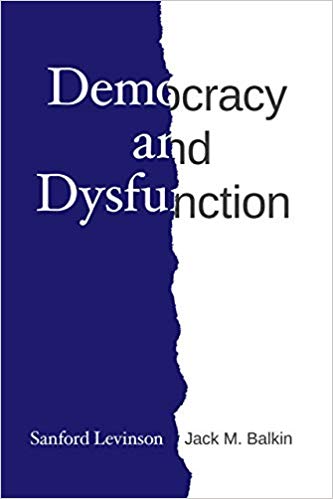
Sanford Levinson and Jack M. Balkin, Democracy and Dysfunction (University of Chicago Press, 2019)

Sanford Levinson, Written in Stone: Public Monuments in Changing Societies (Duke University Press 2018)

Mark A. Graber, Sanford Levinson, and Mark Tushnet, eds., Constitutional Democracy in Crisis? (Oxford University Press 2018)

Gerard Magliocca, The Heart of the Constitution: How the Bill of Rights became the Bill of Rights (Oxford University Press, 2018)

Cynthia Levinson and Sanford Levinson, Fault Lines in the Constitution: The Framers, Their Fights, and the Flaws that Affect Us Today (Peachtree Publishers, 2017)

Brian Z. Tamanaha, A Realistic Theory of Law (Cambridge University Press 2017)

Sanford Levinson, Nullification and Secession in Modern Constitutional Thought (University Press of Kansas 2016)

Sanford Levinson, An Argument Open to All: Reading The Federalist in the 21st Century (Yale University Press 2015)

Stephen M. Griffin, Broken Trust: Dysfunctional Government and Constitutional Reform (University Press of Kansas, 2015)

Frank Pasquale, The Black Box Society: The Secret Algorithms That Control Money and Information (Harvard University Press, 2015)

Bruce Ackerman, We the People, Volume 3: The Civil Rights Revolution (Harvard University Press, 2014)
Balkinization Symposium on We the People, Volume 3: The Civil Rights Revolution

Joseph Fishkin, Bottlenecks: A New Theory of Equal Opportunity (Oxford University Press, 2014)

Mark A. Graber, A New Introduction to American Constitutionalism (Oxford University Press, 2013)

John Mikhail, Elements of Moral Cognition: Rawls' Linguistic Analogy and the Cognitive Science of Moral and Legal Judgment (Cambridge University Press, 2013)

Gerard N. Magliocca, American Founding Son: John Bingham and the Invention of the Fourteenth Amendment (New York University Press, 2013)

Stephen M. Griffin, Long Wars and the Constitution (Harvard University Press, 2013)

Andrew Koppelman, The Tough Luck Constitution and the Assault on Health Care Reform (Oxford University Press, 2013)

James E. Fleming and Linda C. McClain, Ordered Liberty: Rights, Responsibilities, and Virtues (Harvard University Press, 2013)
Balkinization Symposium on Ordered Liberty: Rights, Responsibilities, and Virtues

Andrew Koppelman, Defending American Religious Neutrality (Harvard University Press, 2013)

Brian Z. Tamanaha, Failing Law Schools (University of Chicago Press, 2012)

Sanford Levinson, Framed: America's 51 Constitutions and the Crisis of Governance (Oxford University Press, 2012)

Linda C. McClain and Joanna L. Grossman, Gender Equality: Dimensions of Women's Equal Citizenship (Cambridge University Press, 2012)

Mary Dudziak, War Time: An Idea, Its History, Its Consequences (Oxford University Press, 2012)

Jack M. Balkin, Living Originalism (Harvard University Press, 2011)

Jason Mazzone, Copyfraud and Other Abuses of Intellectual Property Law (Stanford University Press, 2011)

Richard W. Garnett and Andrew Koppelman, First Amendment Stories, (Foundation Press 2011)

Jack M. Balkin, Constitutional Redemption: Political Faith in an Unjust World (Harvard University Press, 2011)

Gerard Magliocca, The Tragedy of William Jennings Bryan: Constitutional Law and the Politics of Backlash (Yale University Press, 2011)

Bernard Harcourt, The Illusion of Free Markets: Punishment and the Myth of Natural Order (Harvard University Press, 2010)

Bruce Ackerman, The Decline and Fall of the American Republic (Harvard University Press, 2010)
Balkinization Symposium on The Decline and Fall of the American Republic

Ian Ayres. Carrots and Sticks: Unlock the Power of Incentives to Get Things Done (Bantam Books, 2010)

Mark Tushnet, Why the Constitution Matters (Yale University Press 2010)
Ian Ayres and Barry Nalebuff: Lifecycle Investing: A New, Safe, and Audacious Way to Improve the Performance of Your Retirement Portfolio (Basic Books, 2010)
.jpg)
Jack M. Balkin, The Laws of Change: I Ching and the Philosophy of Life (2d Edition, Sybil Creek Press 2009)

Brian Z. Tamanaha, Beyond the Formalist-Realist Divide: The Role of Politics in Judging (Princeton University Press 2009)
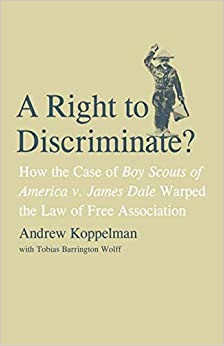
Andrew Koppelman and Tobias Barrington Wolff, A Right to Discriminate?: How the Case of Boy Scouts of America v. James Dale Warped the Law of Free Association (Yale University Press 2009)

Jack M. Balkin and Reva B. Siegel, The Constitution in 2020 (Oxford University Press 2009)
Heather K. Gerken, The Democracy Index: Why Our Election System Is Failing and How to Fix It (Princeton University Press 2009)

Mary Dudziak, Exporting American Dreams: Thurgood Marshall's African Journey (Oxford University Press 2008)

David Luban, Legal Ethics and Human Dignity (Cambridge Univ. Press 2007)

Ian Ayres, Super Crunchers: Why Thinking-By-Numbers is the New Way to be Smart (Bantam 2007)

Jack M. Balkin, James Grimmelmann, Eddan Katz, Nimrod Kozlovski, Shlomit Wagman and Tal Zarsky, eds., Cybercrime: Digital Cops in a Networked Environment (N.Y.U. Press 2007)

Jack M. Balkin and Beth Simone Noveck, The State of Play: Law, Games, and Virtual Worlds (N.Y.U. Press 2006)

Andrew Koppelman, Same Sex, Different States: When Same-Sex Marriages Cross State Lines (Yale University Press 2006)
Brian Tamanaha, Law as a Means to an End (Cambridge University Press 2006)
Sanford Levinson, Our Undemocratic Constitution (Oxford University Press 2006)
Mark Graber, Dred Scott and the Problem of Constitutional Evil (Cambridge University Press 2006)
Jack M. Balkin, ed., What Roe v. Wade Should Have Said (N.Y.U. Press 2005)
Sanford Levinson, ed., Torture: A Collection (Oxford University Press 2004)
Balkin.com homepage
Bibliography
Conlaw.net
Cultural Software
Writings
Opeds
The Information Society Project
BrownvBoard.com
Useful Links
Syllabi and Exams